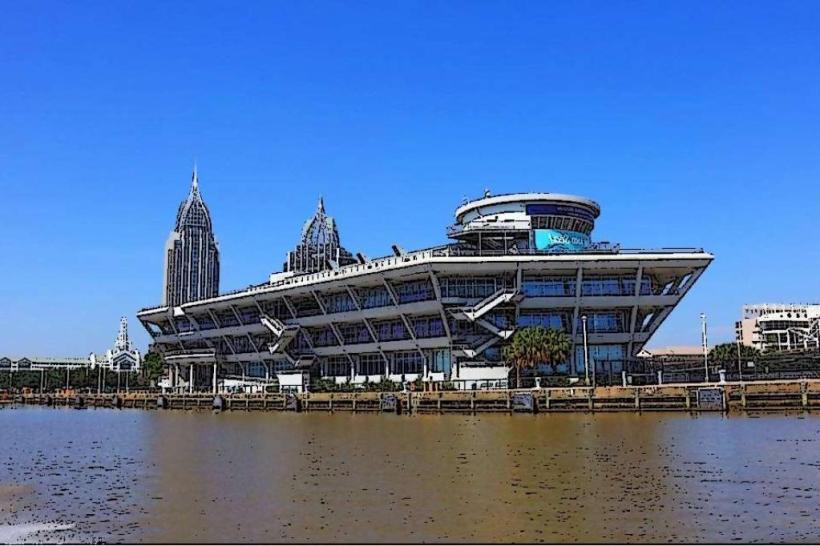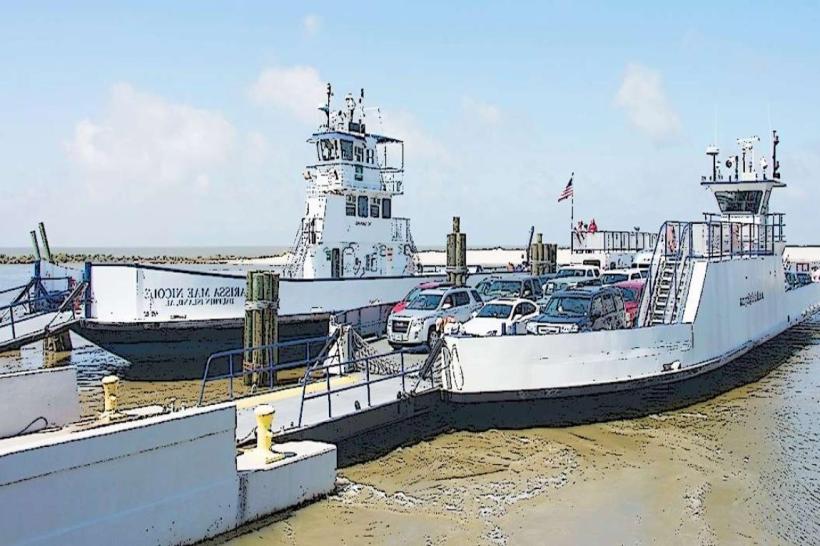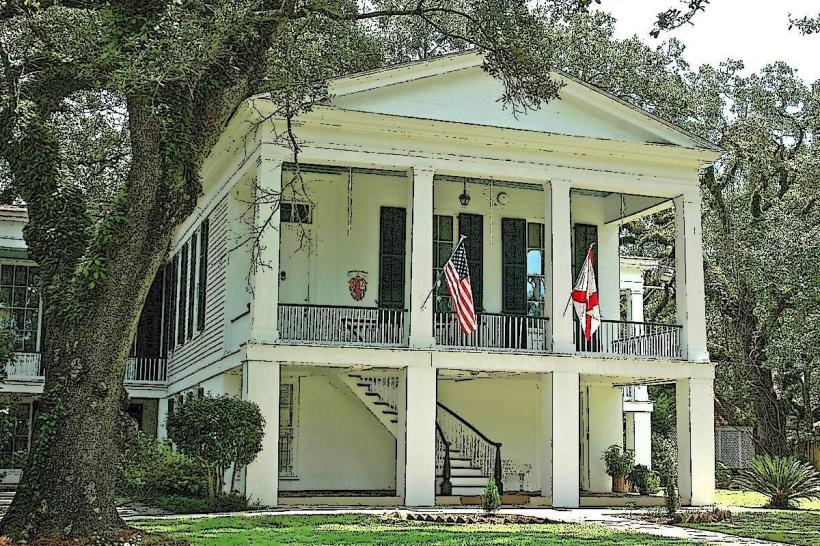Information
Landmark: USS Alabama Battleship Memorial ParkCity: Mobile
Country: USA Alabama
Continent: North America
USS Alabama Battleship Memorial Park, Mobile, USA Alabama, North America
The USS Alabama Battleship Memorial Park in Mobile, Alabama, is a major military and historical attraction, offering visitors a comprehensive experience of naval, air, and military history. It is centered around the USS Alabama (BB-60), a World War II-era battleship, and provides both educational and recreational opportunities for families, historians, and veterans.
Location and Setting
The park is located along the Mobile-Tensaw River Delta, approximately eight miles west of downtown Mobile. Its riverside location allows the battleship to be permanently moored while providing scenic views and easy access for visitors. The park spans more than 165 acres, combining outdoor exhibition space with landscaped grounds, walking paths, and picnic areas.
USS Alabama (BB-60)
History: The USS Alabama is a South Dakota-class battleship commissioned in 1942. It saw extensive service in the Pacific Theater during World War II, participating in battles, escort missions, and shore bombardments.
Preservation: Decommissioned in 1947, the battleship was saved from scrapping through a public campaign and opened as a museum in 1965. It is now a National Historic Landmark.
Exhibits Onboard: Visitors can tour multiple decks, including the main deck, gun turrets, engine rooms, and crew quarters. Displays highlight life aboard a battleship, naval weaponry, and Alabama’s wartime contributions.
USS Drum Submarine
Adjacent to the Alabama, the USS Drum (SS-228) is a World War II-era submarine. Visitors can explore its cramped living and operational spaces, gaining insight into submarine warfare and daily life undersea.
Aircraft and Military Exhibits
Aircraft Collection: The park features over 25 military aircraft, including jets, bombers, helicopters, and fighters from World War II through the Cold War.
Armored Vehicles and Artillery: Tanks, armored personnel carriers, and artillery pieces provide a broader understanding of ground warfare technology.
Interactive Displays: Some exhibits allow visitors to climb inside vehicles or sit in aircraft cockpits, offering hands-on experiences.
Memorials and Educational Programs
War Memorials: Dedicated spaces honor Alabama veterans from World War II, the Korean War, Vietnam, and more recent conflicts.
School and Community Programs: Guided tours, historical reenactments, and educational events teach students about military history, technology, and strategy.
Special Events: Annual events, including Battleship Days and veterans’ ceremonies, attract large crowds and commemorate military service.
Visitor Experience
The park is highly accessible, with parking, rest areas, picnic spots, and shaded walking paths. Touring the USS Alabama and USS Drum provides a tactile, immersive experience, while the aircraft and vehicle exhibits complement the maritime focus. The scale of the battleship and the diversity of exhibits make the park appealing to both history enthusiasts and casual visitors.
Cultural and Historical Significance
The USS Alabama Battleship Memorial Park preserves a tangible connection to America’s military past, particularly World War II naval history. It serves as a tribute to the men and women who served, while also functioning as a museum and educational resource. The park’s combination of historic vessels, aircraft, and armored vehicles provides a comprehensive, multidimensional view of 20th-century warfare.
The park stands as both a memorial and a public history site, where visitors can engage directly with military heritage, explore technological advancements, and reflect on the sacrifices of service members across multiple generations.



















